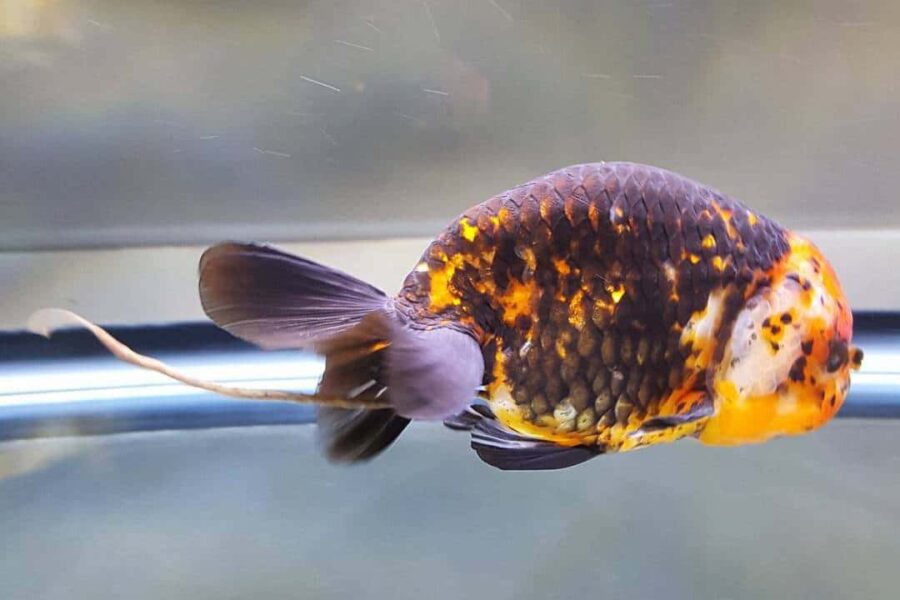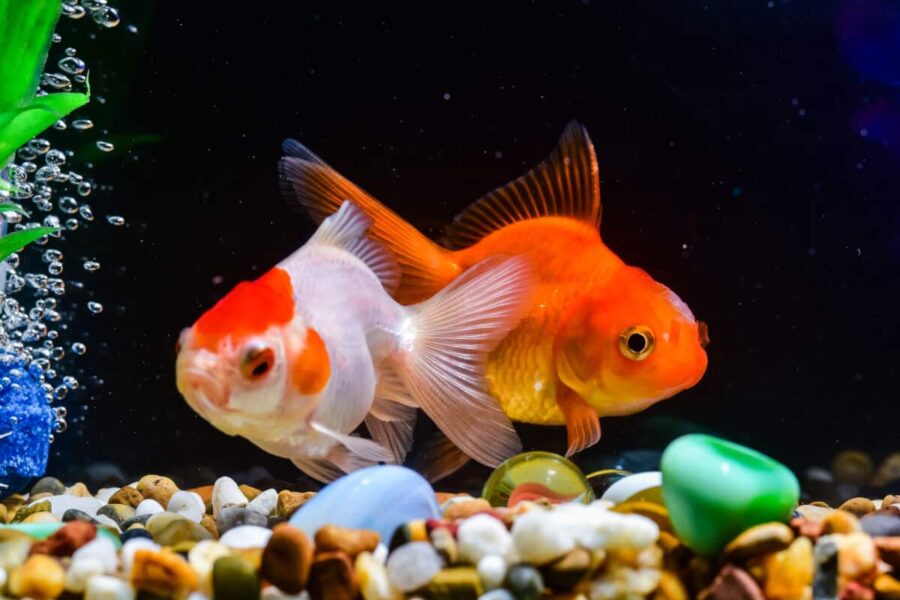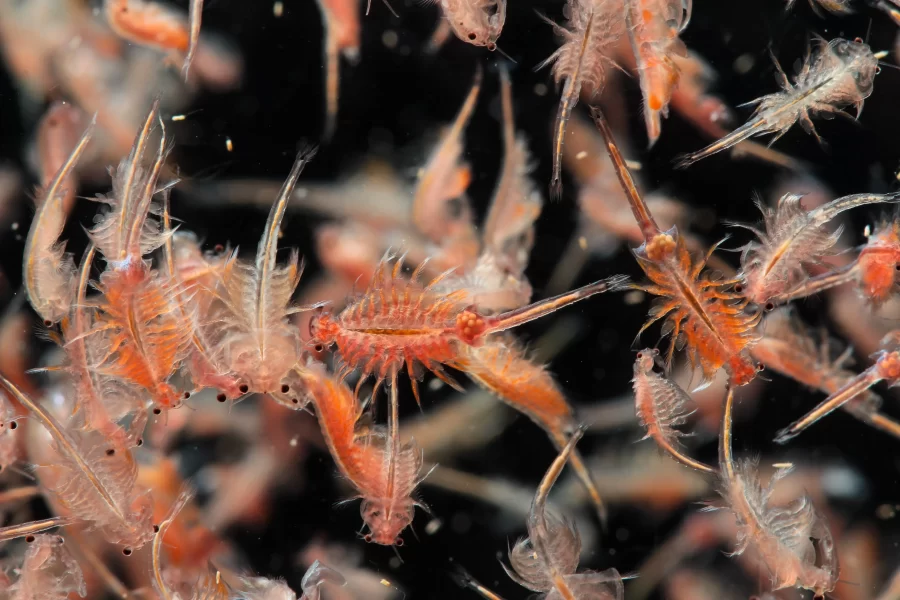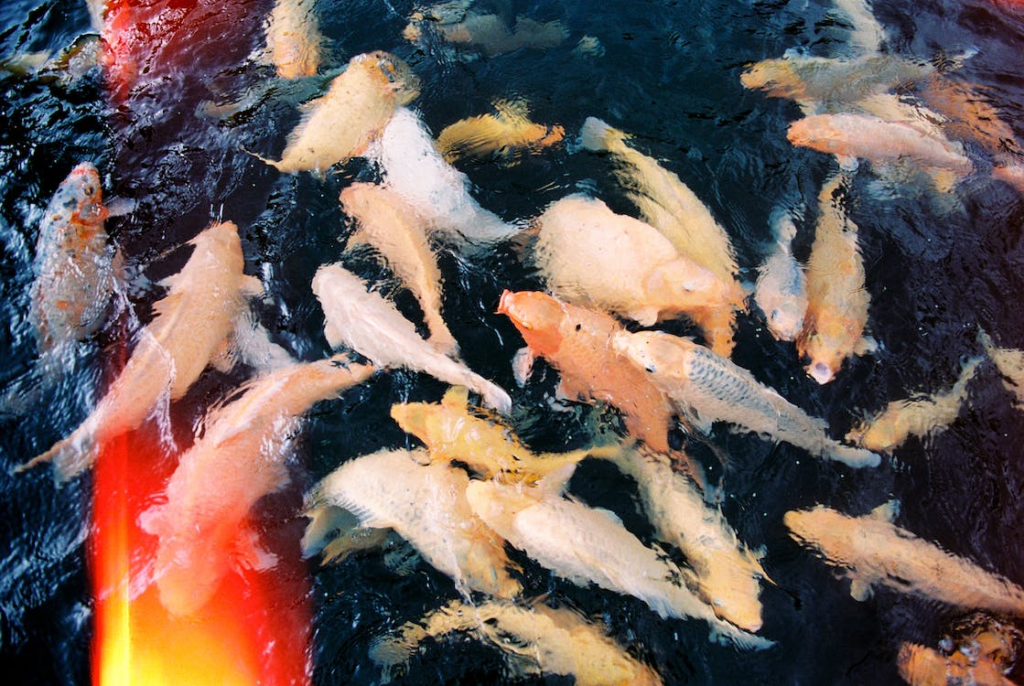
Caught your goldfish gaping at the surface and wondered if it’s trying to imitate a fish opera singer? Well, we hate to be the bearers of bad news, but your goldfish probably isn’t preparing for an underwater concert. This behavior might actually be a sign that something’s up in your tank.
Don’t start panicking just yet though! We’ve got you covered. In this easy-to-read post, we’ll dive into the reasons behind this peculiar behavior. From oxygen shortages to snack hunt adventures and even unwanted parasites, we’re here to discuss it all. It’s like having a friendly, enlightening chat about the captivating world of goldfish behavior. So, make yourself comfortable, and let’s start unraveling this aquatic mystery together!
Understanding Goldfish Behavior

Before we dive headfirst into our fishy problem, let’s go back for a swim in the maiden waters of goldfish behavior. That’s right, it’s time to get into the bubble-topped head of your finned friend.
Recognizing Normal Goldfish Behaviors
In the normal goldfish world, there’s a lot of swimming, eating, and more swimming. They’re like underwater marathon runners with an eating disorder. But kidding aside, a healthy goldfish will swim freely, its fins should be erect, and it should eat regularly.
Identifying Abnormal Behaviors
But what happens when Nemo suddenly gets a bit fishy? Well, indicators of an off-kilter goldfish might include less movement, clamped fins, or in our case, gaping at the surface. This is the part where our scaley concern begins.
Now that we’ve got our fish behavior 101 sorted, let’s zoom into our problem. What could possibly make our domesticated marine life turn into surface gaspers? Find out in the next section where we will touch base on the possible reasons for our goldfish’s out-of-the-normal actions.
Possible Reasons for Goldfish Gaping at the Surface

Now that we’ve gotten a grasp of typical fishy behaviour, let’s dive into the reasons your goldfish might decide to moonlight as a surface gaper. Looking like they’re trying to pull off a ‘fishy rendition of a moon landing’, your goldfish might be trying to tell you something. Here are three possible reasons.
Lack of Oxygen in the Tank
It’s no secret that fish need oxygen, and if there’s not enough of the good stuff in the water, they’ll head to the surface to gasp for air. Poor aeration means less oxygen, and your fish consuming less oxygen than a teen consumes internet data is a big no-no. Like humans, fish need oxygen to live, without it, they start to act all kooky, like gaping at the surface.
Search for Food
Ironically, while goldfish might not remember that they already had dinner five minutes ago, they won’t forget to remind you it’s food o’clock. They may gape around the surface, looking for floating snacks or begging for more grub. You’d be surprised how fast a cute little finned creature can make you feel guilty just by gaping at the water surface!
Disease or Parasite
Let’s not ignore the more serious stuff, though. Sometimes, gaping at the surface can be a sign of an underlying disease or parasite. Akin to us frantically Googling our symptoms at 2 AM, your fish’s symptoms could be trying to tell you there’s a health issue.
So, your fishy friend may be donning its astronaut helmet for one of these reasons, or maybe all three. Don’t fret though, understanding the problem is step number one to successfully addressing it. Next up, we’ll get into details on how to resolve these troublesome issues and help your goldfish stop imitating Neil Armstrong.
How to Resolve the Oxygen Issue
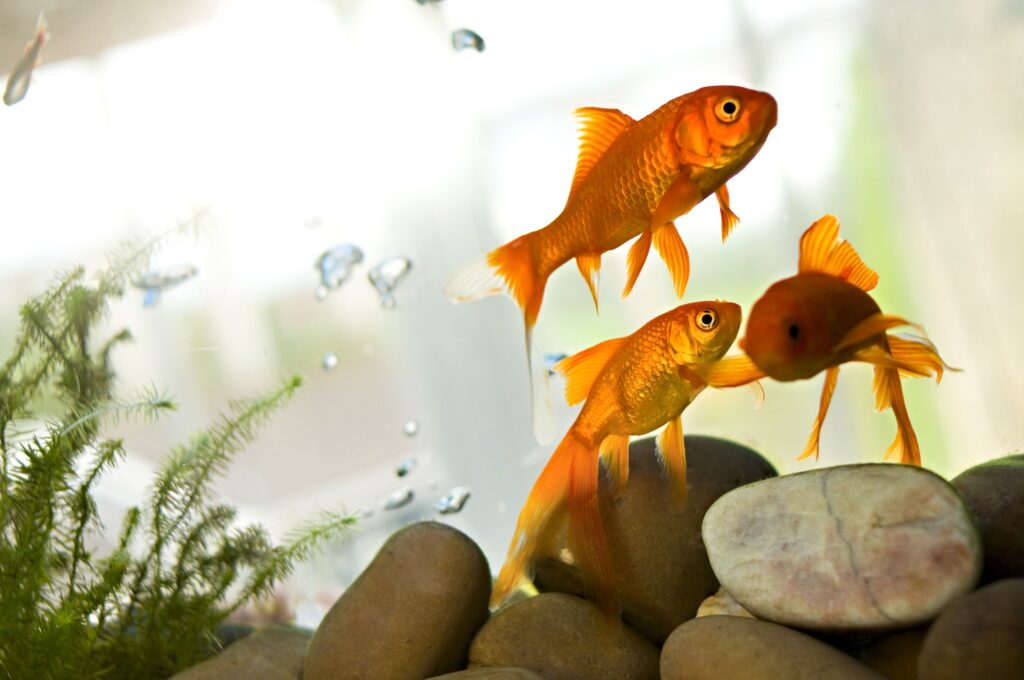
Swimming laps in the Airless Tank Olympics is not your goldfish’s idea of fun. Chances are, if your finned friend is gasping at the surface, it’s not for a breath of fresh air but because of an oxygen issue. Let’s dive into how you can revive your fish’s watery world.
Improving Tank Aeration
Remember our conversation about how your goldfish isn’t competing for a place on the Fish National Swimming Team? Right, so, gasping means there’s probably not enough oxygen in the tank. Stirring the water by adding an air stone, or upgrading to a better filter aids in creating those much-needed air bubbles. With more oxygen filling their gills, your goldfish might just start living their best aquatic life.
Reducing Tank Population
Living with too many roomies can be a drag, even for your goldfish. Overstocking a tank may not only lead to a Netflix standoff on who gets the best hiding spot, but can also reduce the oxygen level. A simple remedy? Lessen the tank’s population. Goldfish, like us, also need their personal bubble for comfort and ample oxygen.
Regularly Changing Tank Water
Do you remember that old bowl of soup that suspiciously looked like a science experiment gone wrong? Right—you don’t want your goldfish swimming in something similar. Regular water changes help remove waste and keep things fresh, improving the overall oxygen level. Initiating Operation Clean Tank will have your goldfish gifting you with buoyant bubbles of thanks – say bye-bye to gaping at the surface!
So, you’ve conquered the oxygen issue. But what if Nemo is still pulling off a great goldfish impression of the Loch Ness Monster? Don’t flip your fins just yet – it’s time to investigate whether they’re turning the top of the tank into a buffet line. In the next section, we’ll tackle food search issues. Stay tuned!
Addressing the Food Search Issue

When your peppy pet is acting like a surface-trolling trawler, the problem might be hunger. “Food! Glorious Food!” as your goldfish might sing – if they could sing, that is. Recognizing their Oliver Twist like behavior isn’t tricky, as we’re about to reveal.
Proper Feeding Times and Amounts
“Goldfish are not garbage disposals,” my granny used to mutter, shuffling around the kitchen. And she’s right; overfeeding can lead to problems just as much as underfeeding can. Ideally, you should feed your goldfish twice a day, just enough food that they can finish within two minutes. Remember, give your fish what they need, not what they want. If you’ve ever seen an overcrowded all-you-can-eat buffet, you’ll know that wants and needs are two very different things!
Finding the Right Balance of Food Types
Your goldfish isn’t intelligent – harsh but true. They’ll snack on anything that fits in their mouths and even stuff that doesn’t. So it’s a bit like having a toddler with fins. A balanced diet is fundamental here. Flakes, pellets, live food – mix it up like a DJ at a summer pool party. But make sure not to overdo any one type. Remember, too much of a good thing can be bad.
Now that you know how to make your gill-flapping friends not act like hungry, hungry hippos, let’s move to the next toe – or should I say, fin-wracking task. Diseases and parasites – yes, even your goldfish can get sick. Let’s dive into how to spot these fishy ailments and what you can do about them.
Dealing With Disease or Parasite Infections

Ok, now we’re entering less fun waters. This isn’t Baywatch, folks! But hey, don’t fret. Fish get sick too, and it’s our job as pet owners to nurse them back to health, right?
Identifying Common Goldfish Diseases and Parasites
Now, your goldfish might have picked up a hitchhiker, and no, I’m not talking about a tiny, scuba-diving Tom Thumb. Parasites can cause fish to gape at the surface. Look for signs of Ich (white spots), flukes, or anchor worms. Not pretty, I know, but part of the goldfish-owning gig.
Appropriate Treatments and Remedies for Goldfish Gaping at the Surface
There’s nothing that online shopping can’t fix. Online stores are stocked to the brim with medicines and treatments. Check for the one that targets your goldfish’s infirmity. And remember, give only the recommended doses. After all, too many cooks spoil the broth, right?
When to Consult a Vet
Playing doctor can be fun, but if your goldfish still looks sicker than a parrot on a pirate’s shoulder after a wild night, it’s vet time. Never feel silly for making that call. Your pet’s health is worth it!
Now that we’re clear on the firefighting rites, let’s explore how to prevent another “House M.D.” season in your aquarium. That’s right, prevention is better than cure, making “How to keep your goldfish healthy” the next to-do on our fish-care list. Let’s dive right in!
Preventing Goldfish Gaping at the Surface
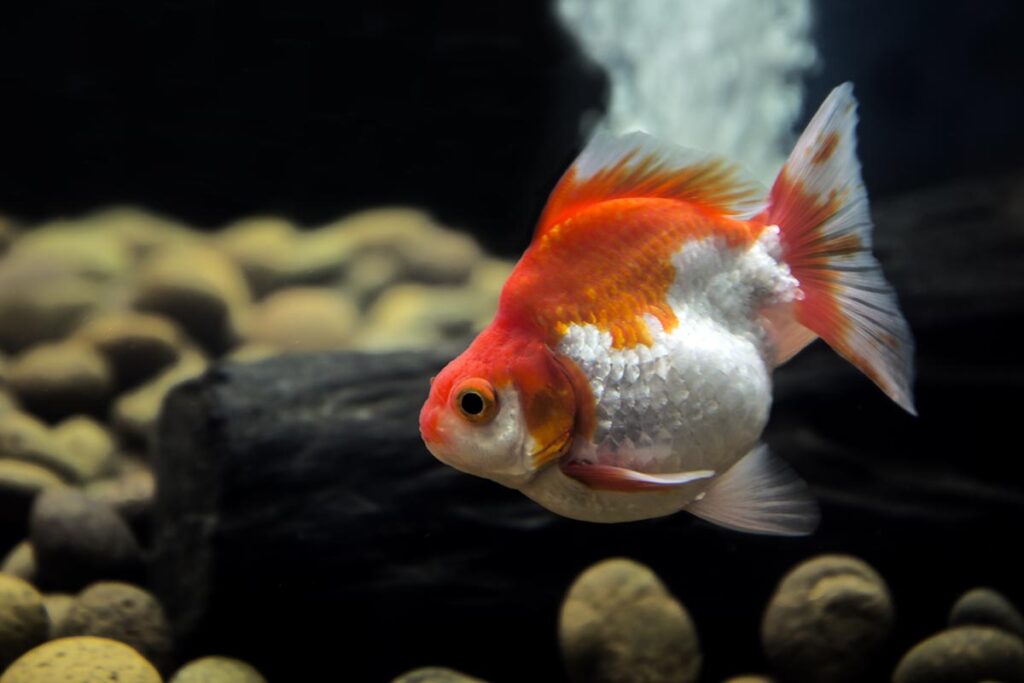
Let’s face it, we all love our little scaly pals, right? So, it makes perfect sense to ensure they stay healthy and happy. Behold, prevention is better than cure!
How to Keep Your Goldfish Healthy
You don’t need a degree in marine biology to keep your goldfish grinning. There are pretty simple golden rules to follow: Maintain water cleanliness, feed them right, and create a stress-free environment. Really, it’s like being a good fishy parent!
Now you’re ready to become the fish whisperer you always knew you could be. Meanwhile, let’s dive into the signs that might mean our flipper friend is feeling off.
Early Signs of Issues and How to Deal With Them
Fish can’t say, “Hey, I’m not feeling well,” right? So, we need to be observant. Loss of appetite, changes in color, erratic swimming, or frequent gasping could be red flags.
Remember, quick action can save the day (or should we say, save the fish?). If you notice any of these signs, revisit the potential causes we discussed earlier and take the necessary steps.
We’ve walked through the how’s, let’s take a moment to appreciate the why’s.
Benefits of Sticking With a Care Routine
Why worry about sticking to a care routine? Simple answer – because it keeps your goldfish happier, healthier, and more vibrant for longer.
Furthermore, regular care reduces the risk of diseases and behavior problems. Bonus? Watching your goldfish thrive might just put a big smile on your face, too.
To Sum Up
Understanding goldfish behavior, whether it’s normal or abnormal, is critical. It can be as simple as grappling with obvious issues like lack of oxygen in the tank, searching for food, or dealing with disease or parasite infections. Learning about the potential problems your goldfish might face, taking the right steps to resolve them, from improving tank aeration and feeding times, regularly changing tank water to finding the adequate balance of food types, is integral for the well-being of your aquatic buddy.
Prevention is always more effective than trying to cure problems. Familiarize yourself with signs of trouble, then take swift corrective action. Ensure you stick to a consistent care routine to maintain a healthy environment for your goldfish. Finding the balance in keeping your goldfish healthy might seem daunting, but it’s certainly doable and rewarding, just like striking gold in the deep blue sea!

